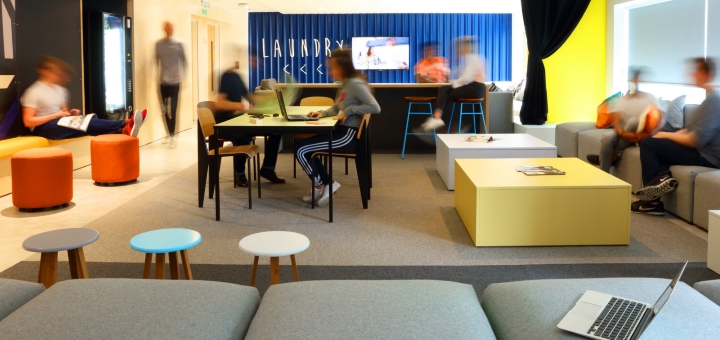What does the future hold for student landlords?

Over the past nine years, the higher education (HE) sector has seen an unprecedented amount of changes. From dramatic increases in tuition fees to the difference in how students conduct their studies, the student accommodation sector now needs to evolve and adapt to stay relevant.
The Brexit effect
Currently, EU students make up 5% of the UK’s student population, and are estimated to contribute around £2.7 billion to the UK economy. They are currently considered “home students” and are charged less than non-EU students who choose to study in the UK. This will almost certainly change when the UK leaves the EU. According to statistics released by UCAS in February this year, there has already been a seven per cent fall in EU applicants applying for full-time university courses.
Brexit may initially cause a degree of uncertainty in the higher education market, but this is expected to be short lived. The UK’s prestigious universities will still attract international students, and the Russell Group is working closely with the UK government to protect the income and soft power generated by those students.
The changing student
The university experience has changed dramatically in the last 10 years. The volatile job market and the increase in tuition fees mean that students are working harder than ever to ensure that their investments are worth it.
The modern student, along with the majority of the public, are now more technologically savvy. We now do everything online, from socialising to banking, and for students this includes academic research and writing.
They no longer have to visit their university libraries to find what they’re looking for – they have access to millions of books via their computers, and unlimited resources available at their fingertips. They can even contact their tutors through various digital means, like email and Skype. All this is changing the way students study compared to their counterparts 10, 20 and 30 years ago.
Students are now looking for places they can study in both formal and informal spaces. They will be looking for study spaces not just in libraries, but in their homes, and for social spaces to be part of their accommodation.
They can complete a complex assignment without even leaving their room, and their accommodation should cater for this. These changing habits can be seen in the increase in amenity spaces in all university buildings, and the increase in popularity of coffee shops and cafes across campuses.
High expectations
As within every industry, greater costs lead to higher expectations. Now that each student is expected to pay in excess of £50,000 for their university experience, students expect value, fair treatment and quality. Scruffy student digs with basic furniture and overused microwaves should be a thing of the past. We’re now in the age of lightning-quick WiFi connections and Instagrammable, well-designed spaces.
Tom Ferber, from Student Cribs, said: “The standard of student accommodation available in the UK has changed beyond recognition in the last decade. Gone are the days of brown carpets and floral sofas. Modern students are demanding more, and landlords are delivering.”
Future trends
Since 2014, investment in UK student accommodation blocks has switched from smaller private investors to larger, more established developers, which means that the size and structure of developments is increasingly varied. According to Savills World Research, there will be an array of mergers and investments over the next decade in an attempt to stabilise the market. However, investors can still expect a strong credit profile, and the decent lending terms may be even be more attractive than the residential market to some developers.
There have been fears in the industry of an oversupply of purpose-built student accommodation, as although the UK is not yet oversupplied, developers have reported that it’s getting tougher to hit 100% occupancy each year. However, research by Knight Frank has shown that commercial student accommodation is a growing industry, with the market share owned by commercial operators rising from 10% in 2009 to 25% in 2016.
One future trend for new developers to concentrate on particularly is the importance of the role of accommodation in social integration. According to Unite, 40% of those living in halls and 45% of those living in private halls expect to make most of the friends in their accommodation. The results also showed that 69% of applicants hope to be able to integrate with others in their halls at social events held throughout the year.
For developers, this means that stylish amenity spaces are important for students in regards to socialising and studying. Developers must ensure that they get the balance right with these spaces: they must be trendy, spacious and available for both work and play.
Upcoming trends for private landlords are going to be different again. Landlords with a small number of properties will have to strategically advertise what they can offer in order to compete with large, private halls.
They may not have the space to offer sophisticated amenity spaces, so should instead concentrate on how much extra space students will have in a house as a whole and invest in good furniture to help make the most of this space. Benefits like student-friendly spaces, all inclusive bills and future-proof design will also set properties apart.
Obstacles
Although the student accommodation sector is performing well, there are some obstacles that student accommodation providers will have to overcome in the next few years.
Affordability is becoming an issue for students, and the commercial student-accommodation industry is struggling to find a balance between the needs of students and the financial ambitions of investors. The NUS has held student strikes fighting the costs of rising accommodation prices, and the Student Accommodation Awards had to withdraw a category for “student experience” after the student panel refused to pick a winner to protest rising rent prices.
As well as this, landlords are going to face challenges in regards to marketing as more foreign students from outside the EU come and study in the UK. Although the number of EU students studying in the UK has fallen, the number of students from Asia, in particular China, continues to rise.
In many cases, residents won’t be able to visit their accommodation before they move in. This means accommodation providers will have to make sure their marketing materials tick all the right boxes from the very beginning of the buyer’s journey.
Business as usual
The UK student housing market continues to show high levels of activity. Britain is home to some of the world’s top universities and has a very high number of international students from both inside and outside the EU.
This strong foundation hasn’t gone unrecognised by investors, whose confidence continues to rise. In 2016, 60% of all purpose-built student accommodations were made by portfolios, which shows that investors see them as a safe-investment.
It’s now time for developers and independent landlords alike to concentrate on the tech-savvy, social, quality-driven students of 2020, while taking notice of the rapidly-evolving industry.









